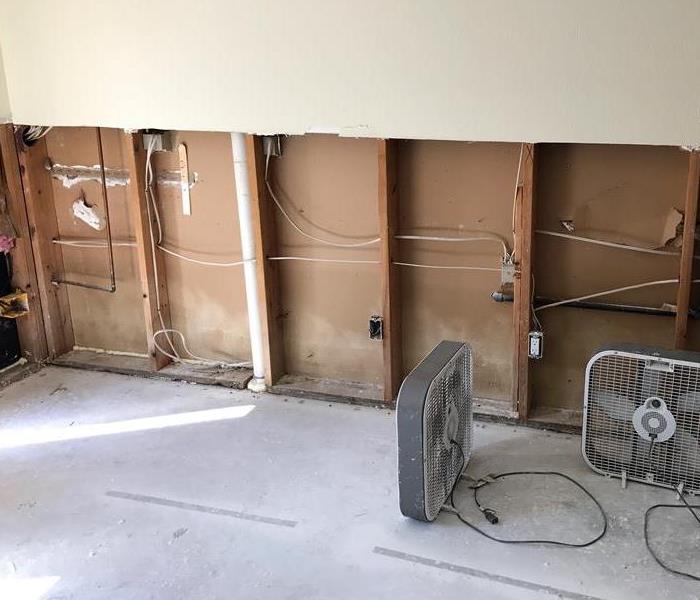Why a Flood Cut is Essential for Water Damage Restoration: Understanding the Benefits
6/6/2023 (Permalink)
 A flood cut is necessary step in the restoration process to remove water damage and prevent secondary damages.
A flood cut is necessary step in the restoration process to remove water damage and prevent secondary damages.
When a home or business experiences water damage, the cleanup and restoration process can be overwhelming. One common term you may hear during this process is a "flood cut." But what is a flood cut, and why is it necessary?
What is a Flood Cut?
A flood cut is a technique used during water damage restoration to mitigate the effects of flooding or excessive water intrusion. It involves removing a portion of drywall or other building materials above the water line to prevent further damage and facilitate drying. Typically, a flood cut is made around 12 to 24 inches above the highest water level. By removing the affected portion of the wall, professionals can access the interior space, assess the extent of the damage, and properly dry the area. This technique helps prevent the growth of mold, as it eliminates any hidden moisture that may be trapped within the wall cavity. After the flood cut is made, the damaged materials are disposed of, and the area is thoroughly dried, cleaned, and restored to its pre-damaged condition. Flood cuts are an essential part of water damage restoration, ensuring the structural integrity of the building and maintaining a healthy living environment. By removing the damaged materials, restoration professionals can properly dry and disinfect the affected area and prevent further damage.
Why is a Flood Cut Necessary?
A flood cut is necessary for several reasons:
- Preventing Mold Growth. A flood cut removes the damaged materials, preventing mold growth and reducing the risk of future water damage.
- More Effective Restoration: Removing water-damaged materials allows for more effective restoration of the affected area. Restoration professionals can properly dry and disinfect the area, ensuring that all moisture is removed and preventing further damage.
A flood cut is typically used in situations where there has been significant water damage due to flooding or excessive water intrusion. It is employed to mitigate the effects of water damage and prevent further issues such as mold growth.
A flood cut may be necessary in the following scenarios:
- Flooding: After a flood event, where a large volume of water has entered a building, a flood cut is often used to remove the affected portion of the wall and allow for proper drying and restoration.
- Burst Pipes or Plumbing Leaks: In cases where there is a significant plumbing failure, such as a burst pipe or a persistent plumbing leak, water damage can occur. A flood cut may be utilized to remove the damaged section of the wall and address the underlying issue.
- Sewage Backup: When there is a sewage backup or overflow, contaminated water can cause extensive damage to walls and pose secondary damages.
- Prolonged Water Intrusion: If water intrusion has gone unnoticed or unresolved for an extended period, leading to hidden moisture and damage within the walls, a flood cut may be necessary to expose the affected areas, assess the damage, and facilitate proper drying and restoration.
The decision to use a flood cut is typically made by water damage restoration professionals or contractors who assess the extent of the damage and the best course of action to mitigate further issues and restore the affected area.
In conclusion, a flood cut is a necessary step in the restoration process for any structure affected by water damage. It involves removing water-damaged materials to protect the health and safety of occupants, prevent mold growth, and allow for more effective restoration. If your property has experienced water damage, contact a professional restoration company to ensure that the cleanup and restoration process is done correctly and efficiently.





 24/7 Emergency Service
24/7 Emergency Service